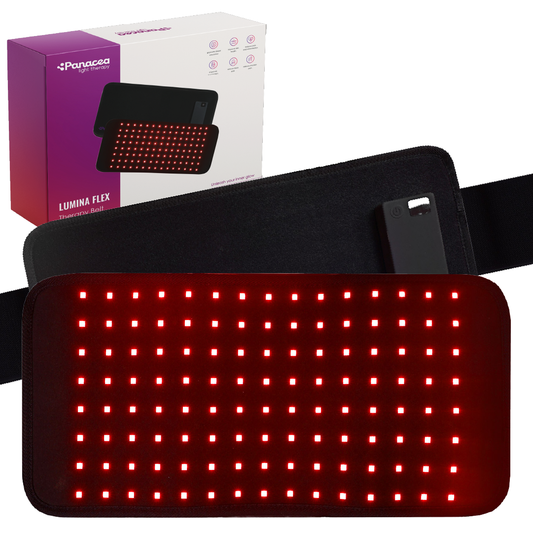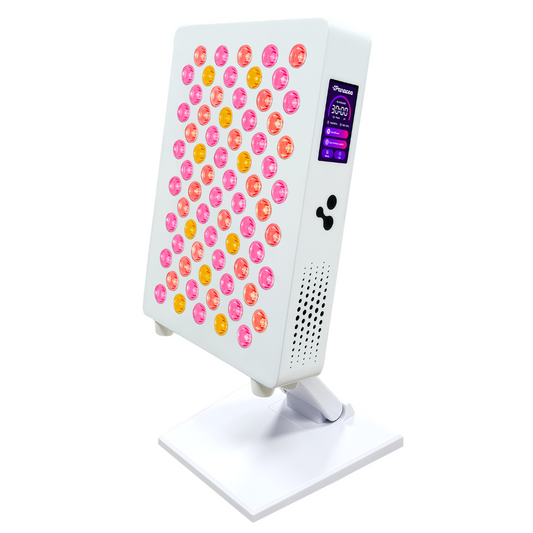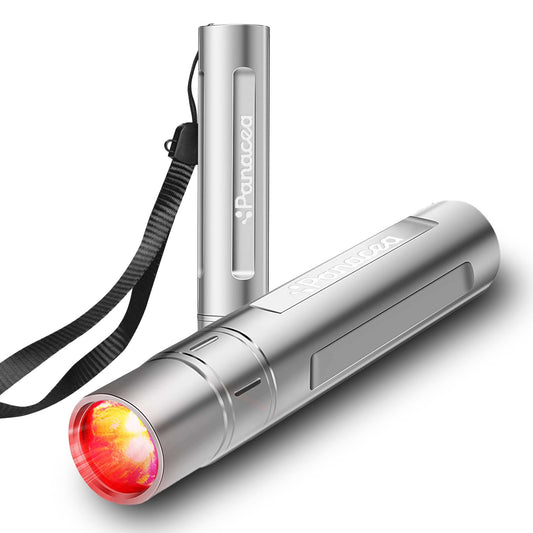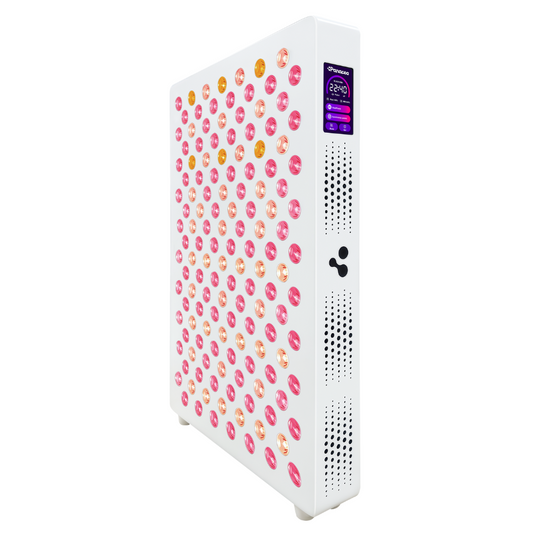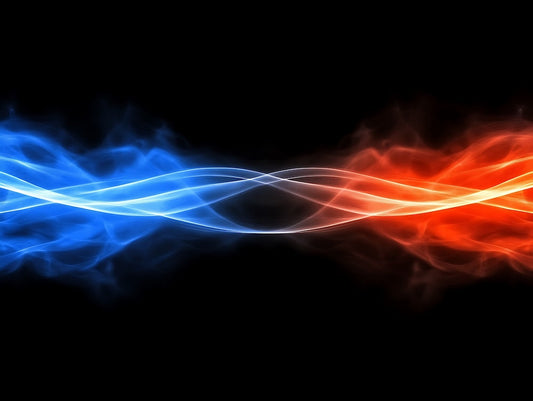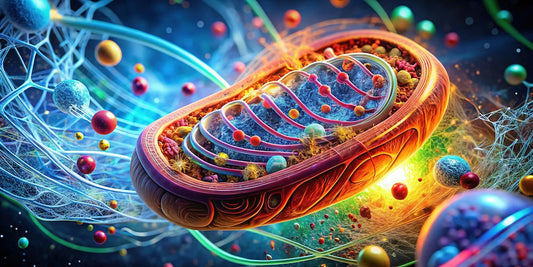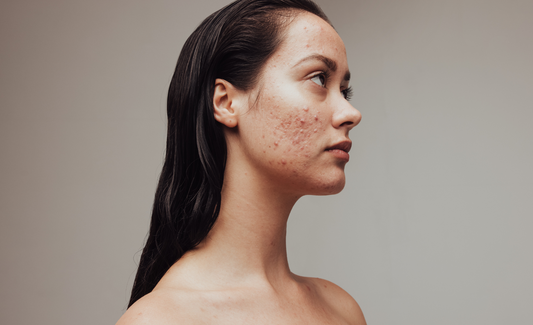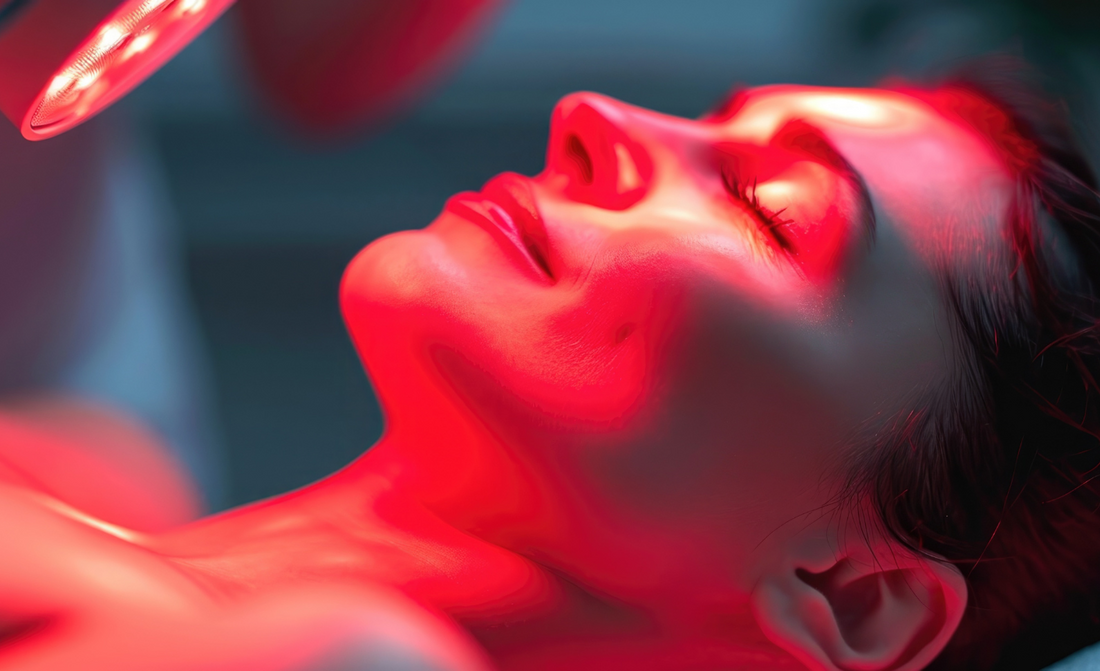
Red Light Therapy and Skin Rejuvenation: A Scientifically Proven Anti-Aging Alternative
Share
A comprehensive guide to the effects of red light therapy on skin rejuvenation, supported by current clinical studies.
The quest for youthful skin is as old as humanity itself. Today, the focus has shifted from aggressive, invasive methods to natural and cell-stimulating technologies . One of these is red light therapy , also known as Low-Level Laser Therapy (LLLT) or Photobiomodulation (PBM) . This therapy uses red and near-infrared light to activate biological processes that help the skin repair, firm and rejuvenate itself.
But how does this work exactly? And which wavelengths are most effective in anti-aging? In this article you will get a clear and scientifically substantiated overview.
What is Red Light Therapy and how does it work?
Red light therapy uses light waves of a specific length (usually between 630 and 1060 nanometers ) that penetrate deep into the skin. These light waves are absorbed by the mitochondria , the energy factories of our cells. The result is an increased production of ATP (adenosine triphosphate) , the energy source needed for cell repair, cell division and collagen production.
This increased cellular energy leads to:
- Stimulation of fibroblasts (production of collagen and elastin)
- Improved microcirculation and oxygen supply
- Inhibition of inflammatory processes
- Acceleration of wound healing
- Decrease in oxidative stress
“RLT increases mitochondrial activity and enhances dermal regeneration, leading to improved skin texture, tone, and elasticity.”
— Avci et al., 2013 – PMC4126803
Wavelengths and their Anti-Aging Effects
1. 630 nm – Superficial skin improvement
- Stimulates epidermal cell renewal
- Improves superficial wrinkles, complexion and pigmentation
- Most suitable for skin refreshment and mild skin aging
2. 660 nm – The gold standard for collagen stimulation
- Penetrates 3–4 mm deep into the dermis
- Activates fibroblasts for the production of collagen type I and III
- Reduces wrinkles and increases skin thickness and elasticity
“Exposure to 660 nm light significantly increased dermal collagen synthesis and reduced wrinkle depth.”
— Lee et al., 2021 – MDPI
3. 810 nm – ATP stimulation in deeper skin layers
- Promotes mitochondrial energy production
- Helps repair UV damage and skin aging
- Often used for scar repair and cell regeneration
4. 850 nm – Inflammation inhibition and cell repair
- Penetrates up to 6mm into the skin
- Inhibits inflammatory cytokines such as IL-6 and TNF-α
- Often combined with 660 nm for synergy
“Combined 660/850 nm exposure reduced inflammation and enhanced fibroblast metabolism.”
— Lu et al., 2024 – ScienceDirect
5. 940 nm – Vascular and immune modulation
- Regulates blood supply and immune activity in the skin
- Supports recovery from chronic inflammation and sagging skin
6. 1060 nm – Deep thermal stimulation and skin tightening
- Used for thermal collagen contraction
- Stimulates fat reduction in the subcutaneous tissue (e.g. jawline and double chin)
“1060 nm light causes subdermal tightening through collagen remodeling.”
— Weiss et al., 2020 – JDD
Summary: Physiological Benefits for the Skin
| Process | Result | Supported by wavelengths |
|---|---|---|
| ↑ ATP production | More cell energy, faster regeneration | 810 nm, 850 nm |
| ↑ Collagen/elastin | Fewer wrinkles, firmer skin | 630–660 nm |
| ↓ Inflammation | Slows down skin aging | 850–940 nm |
| ↑ Blood circulation | Better complexion and nutrition | 660–850 nm |
| Thermal stimulation | Tightening, fat breakdown | 1060 nm |
Practical Application
Red light therapy is:
- Non-invasive – no injections, no recovery time
- Painless and safe – suitable for all skin types
- Home use – LED masks or panels
- Affordable – one-time investment instead of expensive treatments
“84% of 660/830 nm LED device users reported improvement in skin tone and reduction of fine lines.”
— Bu et al., 2024 – CCID
Conclusion: A scientifically based alternative to surgery
Red light therapy offers a convincing alternative for those who want to tackle skin aging naturally and safely. Thanks to direct stimulation of the skin cells at energy level, it provides structural, long-term improvement:
- Fewer wrinkles
- Better elasticity
- Tighter contours
- Healthier, brighter home
This makes it an ideal therapy for people looking for lasting skin rejuvenation, without injectables, surgery or recovery period.
Scientifically Substantiated Articles on Red Light Therapy and Skin Rejuvenation
-
Avci et al. (2013).
Low-Level Laser (Light) Therapy (LLLT) in Skin: Stimulating, Healing, Restoring
🔗View article on PubMed Central -
Lee et al. (2021).
Use of a Light-Emitting Diode Device for Neck Rejuvenation and Its Safety on Thyroid Glands
🔗 View article on MDPI -
Lu et al. (2024).
Role of fibroblast autophagy and proliferation in skin anti-aging
🔗 View article on ScienceDirect -
Rostkowska et al. (2023).
Dermatological Management of Aged Skin
🔗 View article on MDPI -
Gerasymchuk et al. (2023).
Sex-Dependent Skin Aging and Rejuvenation Strategies
🔗 View article on MDPI -
Zhang et al. (2024).
Skin Photobiological Effect Induced by Blue Light: Clinical Manifestation, Mechanisms, and Protection
🔗 View article on ScienceDirect -
Chwil et al. (2024).
Health-Enhancing Effects of Arthrospira and Spirulina Microalgae on Skin
🔗View article on PubMed Central
Clinically Proven Effectiveness
✔ Collagen production and skin elasticity
Red light therapy at 660 nm led to significant increases in collagen production and decreases in wrinkle depth.
🔗 Lee et al., 2021 – MDPI
✔ Reduction of inflammation
850 nm and 940 nm suppress inflammatory markers, essential in chronic skin aging.
🔗 Lu et al., 2024 – ScienceDirect
✔ Safety and effectiveness for home use
Studies confirm effectiveness of home LED devices for skin rejuvenation.
🔗 Bu et al., 2024 – Taylor & Francis
✔ Effectiveness on fibroblast activation
Fibroblast proliferation plays a key role in skin rejuvenation – significantly increased under red light exposure.
🔗 Rostkowska et al., 2023 – MDPI

